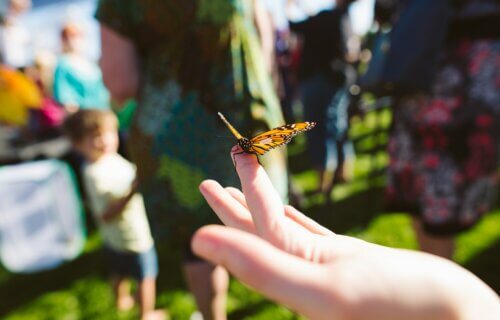LONDON — Despite seeing all sorts of creatures every day at the park or in their backyard, it turns out most people don’t have a clue about nature!
In fact, a recent OnePoll survey polled 2,000 British adults and found three in four felt more confident identifying pigeons than anything else in a garden. More than half (55%) could not distinguish between a moth and a butterfly. Moreover, a quarter had no idea a caterpillar transforms into a butterfly.
Despite feeling more confident in identifying common birds, only 58 percent correctly spotted a robin and that’s mainly because of its colorful red feathers.
There is still hope, however, since 16 percent of parents say their children know more about nature than they do. Another 62 percent wished they spent more time learning about nature and wildlife as a child and 53 percent are appreciative of the nature shows on TV now.
“It’s vital to have at least a little understanding of what’s happening in our gardens. The more we learn and understand, the more we can help the wildlife around us thrive,” says a spokesperson for housebuilder Redrow, the UK group that commissioned the study, in a statement. “It’s so important to make your garden or any outdoor space you have a welcoming environment for wildlife, whether that’s growing more flowers for bugs and insects or creating homes and feeding birds.”
Children might do a better job at appreciating nature, and two in three parents say they’re thankful for their child’s school helping them to learn more about it. About half of adults add that influential figures such as Greta Thunberg and social media are to thank for instilling their current love of nature.
All-inclusive gardening
Still, the average adult can only identify six birds and six insects that commonly visit gardens. Another 78 percent cannot tell the difference between a bee and a wasp — and only a quarter knew a bee dies the moment it stings someone.
Despite the educational shortcomings, three in 10 people say they’ve grown their lawn and garden to help with biodiversity. For example, 67 percent say their yard is “welcoming” to bees and other pollinators. Another eight to 10 want to transform their garden to grow more fruits and vegetables.
“Despite people not always understanding or being able to identify what’s in their garden, it’s great to see that many are still trying to do what they can to create an inviting outdoor space for them,” says the Redrow spokesperson. “It only takes small and simple changes, and you don’t need a huge space to do these things either.”
Four in five people say they feel happier when being outdoors, which aligns with previous studies that found nature can boost a person’s well-being.

